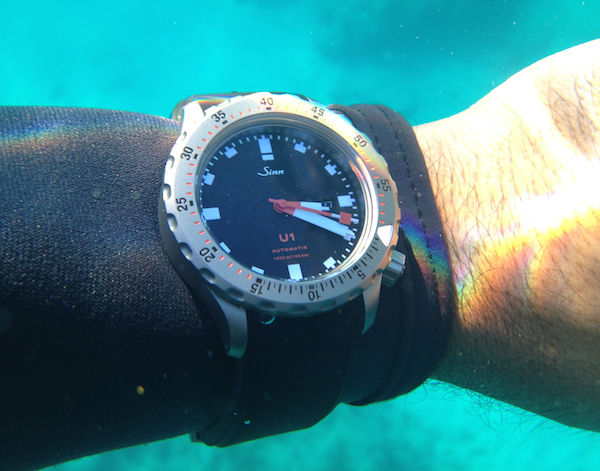
Dive watches, especially Sinn, are arguably the ultimate tool watches. They are typically rugged, water resistant, and usually offer some means to measure elapsed time. However, few use their dive watches outside the office. “Desk-diving” is the most common destiny of a modern dive watch and to highlight the irony, for some reason the trend in modern dive watches is to be rated 500m or more, while, even a seasoned professional diver rarely ever dives past 200m…
Maybe the popularity of desk-diving watch lovers are to blame for a crowded market for dive watches. As a result, some of the most famous and popular watches in existence today are dive watches, e.g., Rolex Submariner and the Omega Seamaster, and that market also includes lots of bargain as well, e.g., Seiko Orange Monster, and some clearly overpriced watches like the Audemars Piguet Royal Oak Offshore Diver or the Hublot Oceanographic.
This review is about the Sinn U1 which is an affordable yet solidly made (even over-engineered) diving watch with all the necessary features and function needed in a dive watch. This review is based on my experience using the Sinn U1 during four dives (Honolulu and Key Largo) as I got my PADI certification, it performed perfectly, not that I expected anything else.
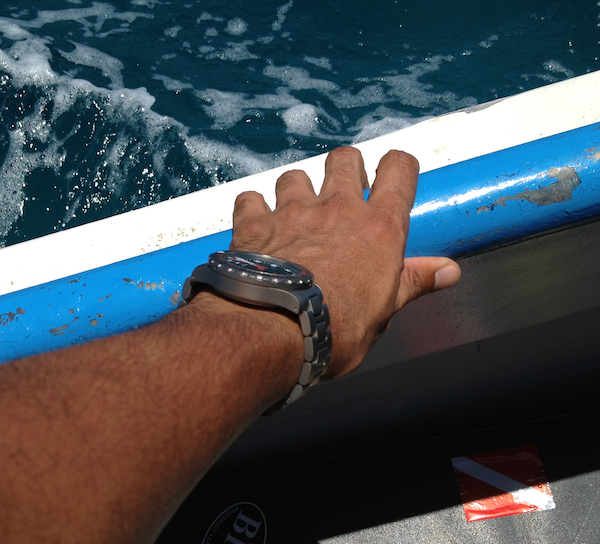
In this post I want to review the Sinn U1 in the context of these dives, while also attempting to debunk some myths about dive watches. After all, a dive watch might save your life when used in the context it was meant for, so understanding the features that are important vs those that are for show, is critical.
Scuba diving is a relatively new sport and activity. People used to visit the underwater world but mostly being attached to a boat with air pumped via a tube. In the early part of the 20th century, various countries’ navies included the so-called “frogmen”. These early professional divers would perform dives and underwater activities with specialized breathing apparatus… In this context, watches like the Panerai Radiomir, with a Rolex movement, came into existence for their legibility and groundbreaking underwater performance. However, they were large and mainly used only during the dive.
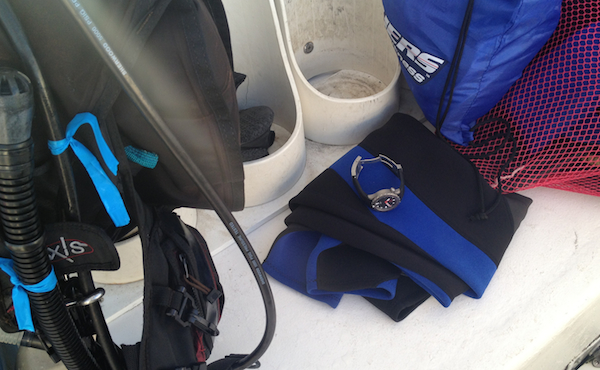
With the invention of SCUBA (self-contained breathing apparatus) and a modern understanding of diving theory, the dive watch was born in the 1950s. Rolex and other brands like Blancpain would eventually create the first true dive watches. These are watches that could be used as daily wear but also be used as an instrument for diving.
The salient features needed for a dive watch are: water resistance; rotating bezel; and possibly a helium escape valve. Water resistance is the key. Recreational divers reach depths up to 40m (rarely more) and technical divers limit is set to 100m. A true diving watch therefore needs to be able to sustain the kind of pressure at these limits, anything more is really bonus. Most diving watches are tested using an atmospheric pressure chamber hence the reason for 20 bars or 30 bars usually listed on modern diving watches.
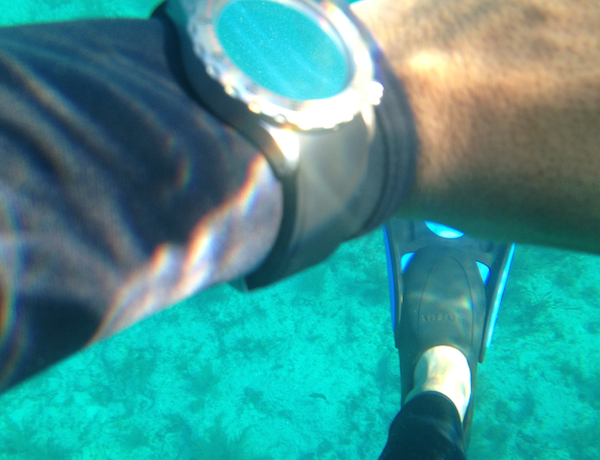
The rotating bezel was another key feature needed in the past. Today, it’s still useful in that for me I use my mechanical watch as a redundant timing mechanism in case my digital dive computer would fail (e.g., battery dying). This is important since most single scuba tanks give you about one hour of dive at recreational limits, 60 to 100 feet and normal usage. And you really don’t want to be performing a dive not knowing how long you’ve been in the water. If this is not obvious as to why, later on I give some more reasons.
Finally, a helium release valve. This feature is strictly for professional divers who perform multiple dives in one day at saturation levels (also using oxygen/nitrogen mixtures to allow for longer dives) and thus need to enter decompression chambers at the end of their days. In these cases, the watch crystal may pop out unless the trapped helium has a way to escape. Working with COMEX, Rolex invented the automatic helium release valve we frequently now see in many dive watches.
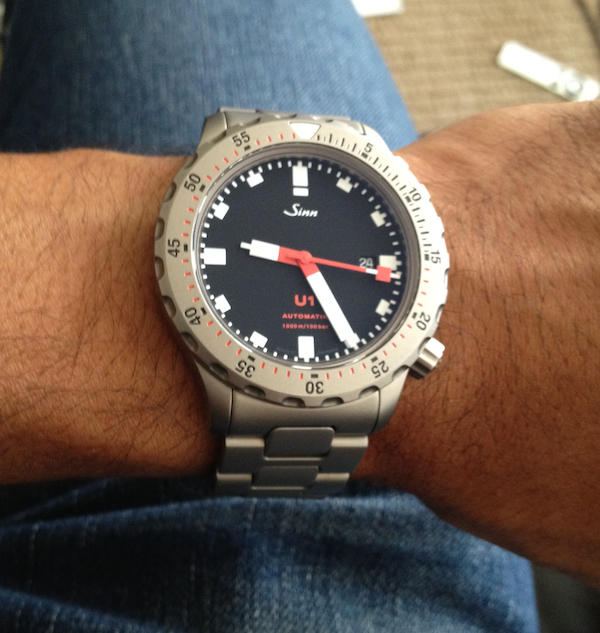
While the Rolex Submariner is the iconic and first true dive watch, it is not the only one worthy of your attention as a recreational diver. Sinn is a brand that I respect for many reasons. Their watches are functional and have a unique style while also being no-nonsense tools that are affordable. While as a fan of dive watches, I have a few, for my PADI certification dives I chose to use the Sinn U1. I will try to explain why I love this watch and why it’s near the top of my list for functional, affordable dive watches.
First, the Sinn U1 has a unique simple dial. With squared minutes and hours hands rotating on a black dial with hour markers made of “lego-like” squares with a central etched marker that matches the hands perfectly. The seconds hand also has a square at the end and uses a red coloring at the tip to make it better contrast with the hours and minutes hands.
This results in a legible dial in every aspect. Surrounding the dial is a rotating bezel with a lume marker shaped as a triangle used to indicate your entry in the water. The unidirectional bezel has the right feel, a little play, but not much. Markings on the bezel are well done, never overpowering the look of the dial, and have a red accent on the markers from 15 to 60 minutes, this is unlike most other dive watch bezels which tend to do the opposite (highlighting the first ten or fifteen markers).
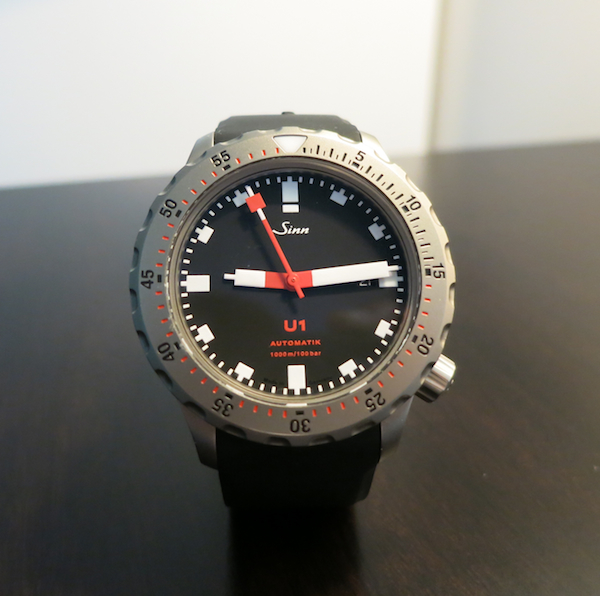
Another important feature needed for dive watches is legibility in the dark. The Sinn U1 accomplishes this in spades as the lume is excellent, though it is not present on the bezel markers except for the triangle start marker at 12 o’clock. In the dark, with a little charge, it’s easy to clearly see the exact time as the hands and hour markers and minute markers are all painted with a layer of Super-Luminova that shines brightly for hours.
Sinn is known for over-engineering their watches. In this instance that happens in particular with the case. It’s made from German Submarine steel and treated to increase scratch resistance. It’s a hardening process Sinn calls “tegimentation”. As far as I could see, this hardening works well as I had no issues with the case though my tegimented bracelet did see some minor scratches at the buckle while putting and taking off my BCD (buoyancy control device) jacket.
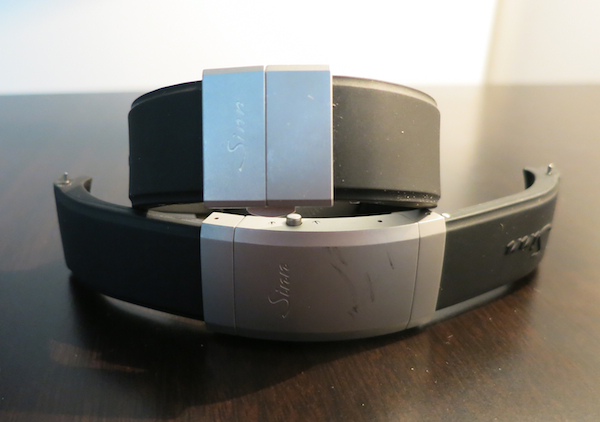
Another interesting result of the special steel used by Sinn is that the resulting color is closer to titanium than it is to brushed or satin-finished steel. This is a good thing for a serious dive watch since the last thing you need underwater is a “blingy” watch. During my dive in Key Largo, we were encircled by a group of barracudas. Some coming as close to a foot from me and the iPhone I was using to film (see short video in this post).
The thing about barracudas is that while they rarely attack humans, they are a curious species and are known to try to eat any polished metal things you have hanging on you… There are many reported cases of people losing their gold chain or charms from curious and hungry barracudas. Since the Sinn U1 case is hardly reflecting any light, that was a non-issue for me.
The movement in the Sinn U1 is the ubiquitous ETA 2824-2. Nothing fancy here and from my experience provides accurate performance as you would expect. However, one issue is that while the crown at 4 o’clock makes the case fit easily on my wrist, unscrewing the crown to change the date (position one) or the time (position two) with hacking seconds leaves some things to be desired.
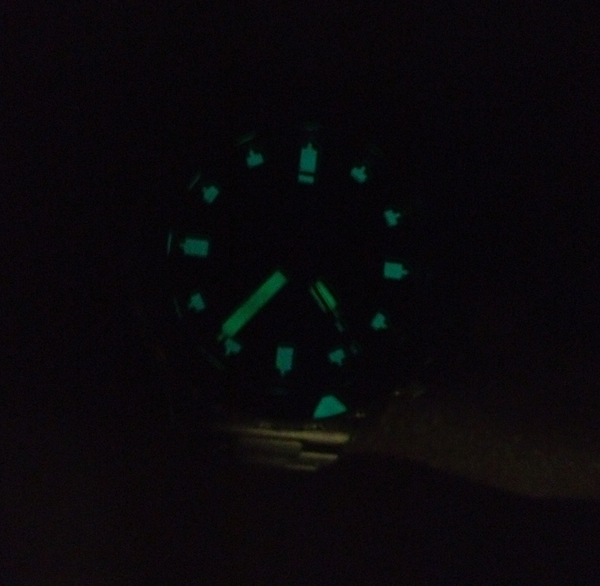
First, the crown seems to be fragile after unscrewing. Also, the crown positions don’t “click” so sometimes if I want to wind the watch (first position after unscrewing) I end up changing the date since it enters position one. Not sure if this is due to the fact that most ETA 2824-2 based watches tend to have the crown at 3 o’clock and while Sinn must have re-engineered the movement somehow to put the crown at 4 o’clock, the result is not the best it could be.
The Sinn U1 is a relatively heavy watch. On the tegimented bracelet, with a couple of links removed, it comes in close to 1/2 pound. The 44mm case is just right for my almost 7 1/2 wrist and is somewhat comfortable, while (again) heavy. This is especially true since as mentioned, Sinn places the crown at 4 o’clock instead of the common 3 o’clock. This makes the crown easy to grasp while also avoiding putting any pressure on your wrist as you move your arm and your hand.
Certainly during the dive, on the heavy bracelet, it’s perfect. The extra 10mm for the dive extension is good for most diving excursions but clearly not as sophisticated as modern micro-adjustable bracelets that come with the new Rolex Submariner 114060 for example.
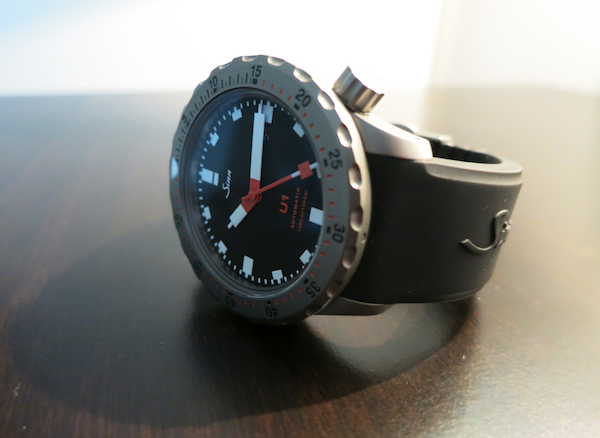
The Sinn Rubber strap is more comfortable since it reduces the weight considerably (173g for the large folding clasp buckle and 155g for the small buckle). However, the Sinn folding clasp (large) is sub-par. While great looking, it is large and scratches easily and also not micro-adjustable. It has a diver extension but it’s relatively long at about 10mm. Sinn sells a smaller clasp version as well as tegimented steel versions.
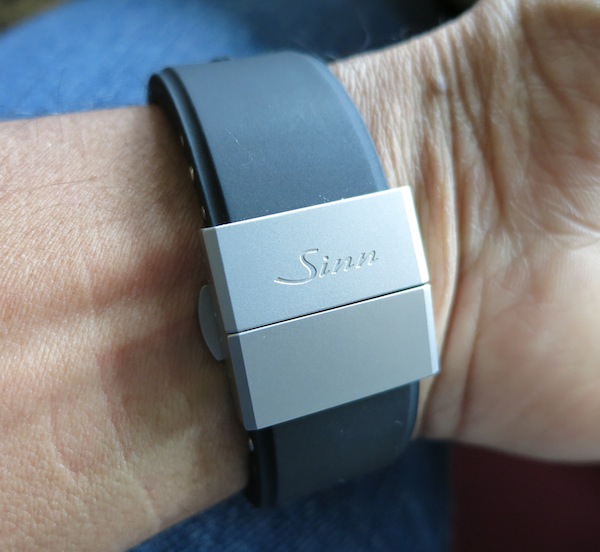
While I am not fully sold on the hardness of the tegimented steel, it does appear to be harder to scratch than non-tegimented versions. The part of any dive watch that takes the most abuse is the clasp—mostly from putting on and removing the BCD. On my tegimented bracelet, I did scratch it a little after a second dive, that time, in Hawaii. Nothing major but enough to make me a bit doubtful about the technology.
However, on the non-tegimented folding large clasp that came with rubber bracelet I was able to easily scratch the clasp and that was a lot more than the bracelet. So maybe the tegimentation does work? Of course, this is all anecdotal evidence and a more scientific experiment should help resolve any doubts. Until one is done, I’d say always get the tegimented versions if the price is not exorbitantly more than non-tegimented.
Since I also enjoy this watch for occasional desk diving, I got the Sinn leather strap. This fits the watch perfectly and gives it a more daily wear feel and also a dressier look. Since the weight is reduced to about 140 grams, it is also quite comfortable to wear on that strap.
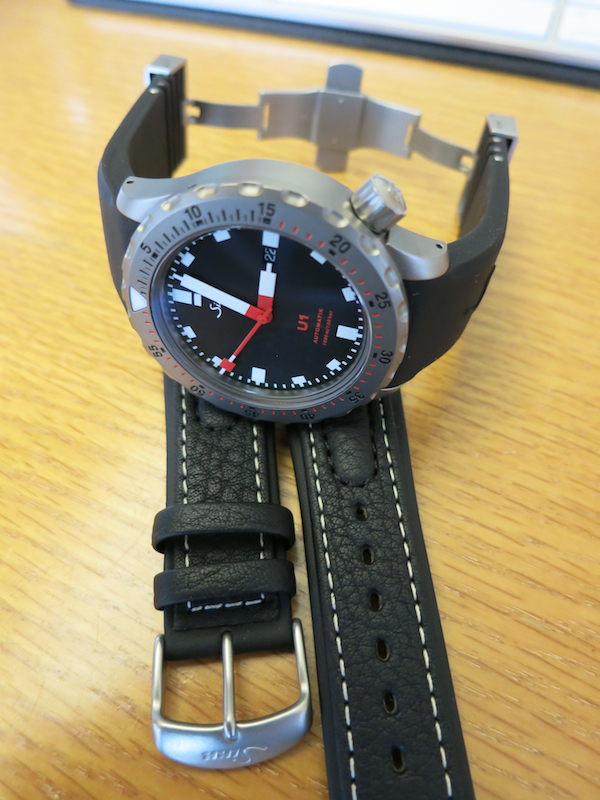
As expected, the Sinn U1 performed brilliantly during my last four dives. Besides the scratches on both the tegimented bracelet and non-tegimented large clasp for the rubber strap, my only other issue is the fact that the dial, while very legible and visible under water, does suffer from some reflection issues. That is, in most lighting conditions under water, at short angles (45 degrees), the dial becomes essentially a mirror. This is mainly due to the AR coating and the fact that the crystal is flat. Domed sapphire crystals, like on Panerai watches, tend to be more immune to this mirror issue under water.
The Sinn U1 Tegimented on bracelet reference SI-255 retails for $2,420 with the non-tegimented on bracelet going for around $2,000. It is rated at 1000m and also passes anti-shock (DIN 8308) and anti-magnetic (DIN 8309) specification tests. While not necessarily limited, the production of the tegimented version is more restricted than the regular version.
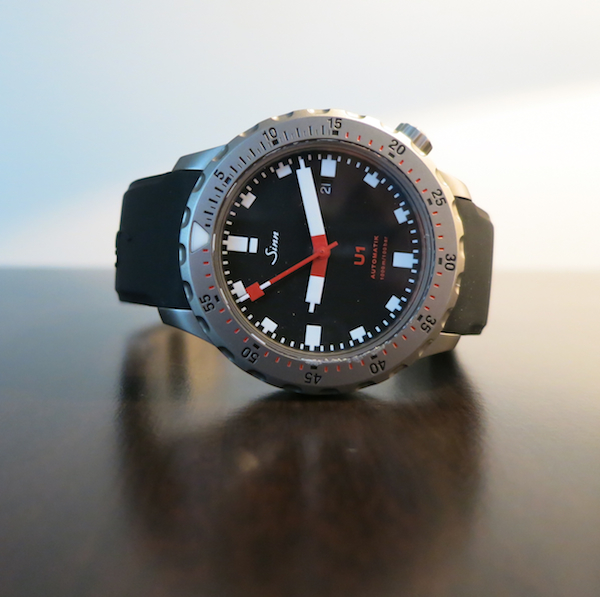
Sinn also has various other Ux models including the U2 which contains a GMT hand and the U1000 with water resistance in the 4000m range. Other models also exist with chronograph complication and one with a dial filled with liquid to increase even more the water resistance. Again, nothing a recreational diver or professional diver will ever need. Finally, Sinn also has black versions of most of its Ux divers including tegimented black versions. These give the watch a military look that some will certainly appreciate.
Overall, while not a “perfect” dive watch, I have been highly satisfied with the Sinn U1. The simplicity of the Bauhaus design coupled with the unique engineering and style made it an excellent companion during my dives as I got my certification. My intention is to get the next levels of PADI certifications, so watch this space for more real live “diving” reviews. I cannot wait to put my other divers to their intended use as I can hear them complain of too much desk diving! sinn.de/en
Necessary Data
>Brand: Sinn
>Model: U1 Tegimented reference SI-255
>Price: $2,420
>Size: 44mm x 15mm (50mm lug to lug)
>Weight: 190g on bracelet and 173g or 155g on rubber straps (large and small buckle)
>Would reviewer personally wear it: Yes
>Friend we’d recommend it to first: Anyone interested in recreational diving looking for a solid watch and a budget of under $2,500
>Worst characteristic of watch: The bracelet diver’s extension is not easily micro-adjustable.
>Best characteristic of watch: Simple dial with Bauhaus design with nothing superfluous or unneeded.
